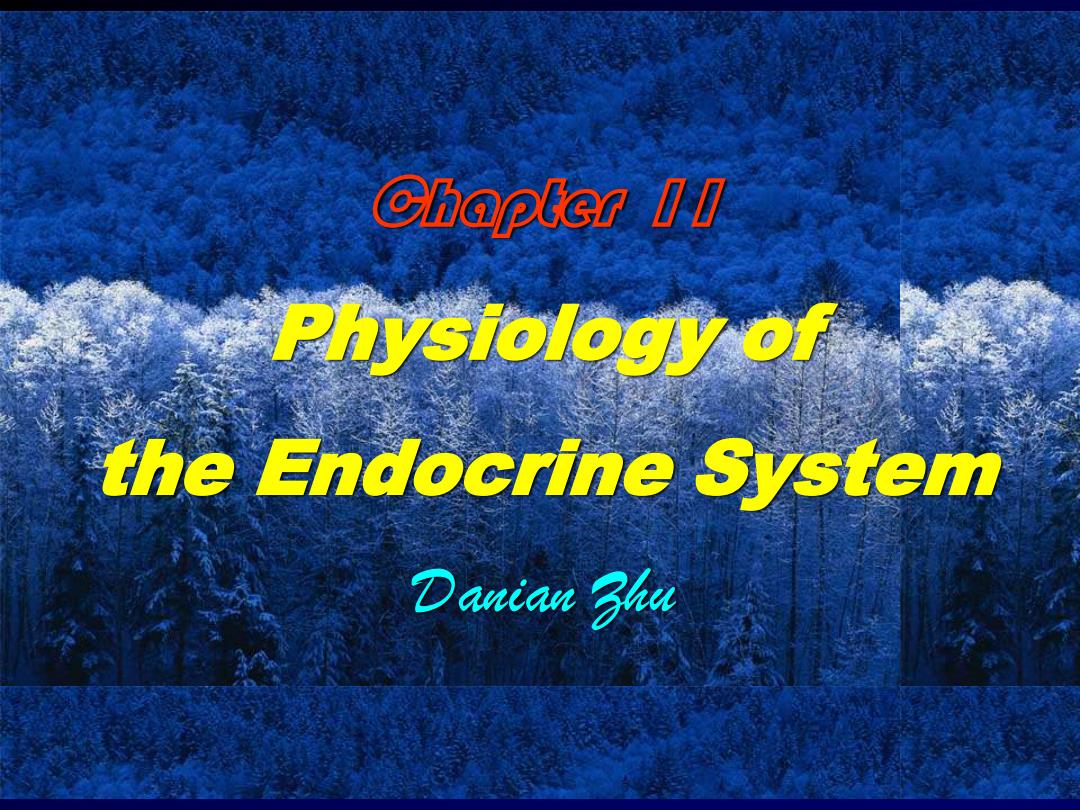
⊙iapler II Physiology of the Endocrine System Danian
Chapter 11 Physiology of the Endocrine System Danian Zhu
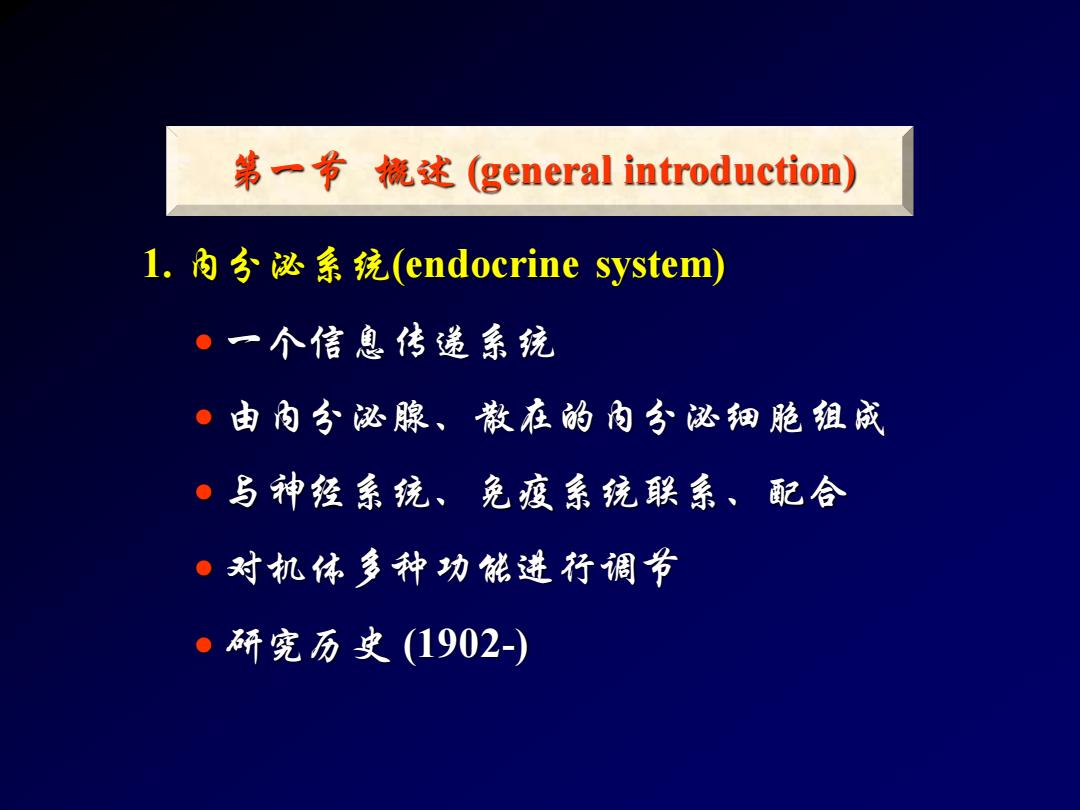
第一节撬述(general introduction) I.为分泌系绕(endocrine system) ·一个信息传递系统 ·由内分泌腺、散在的内分泌细胞组成 ·与神经系统、免疫系统联系、配合 ·对机体多种功能进行调节 ·研究历史(1902-)
1. 内分泌系统(endocrine system) • 一个信息传递系统 • 由内分泌腺、散在的内分泌细胞组成 • 与神经系统、免疫系统联系、配合 • 对机体多种功能进行调节 • 研究历史 (1902-) 第一节 概述 (general introduction)
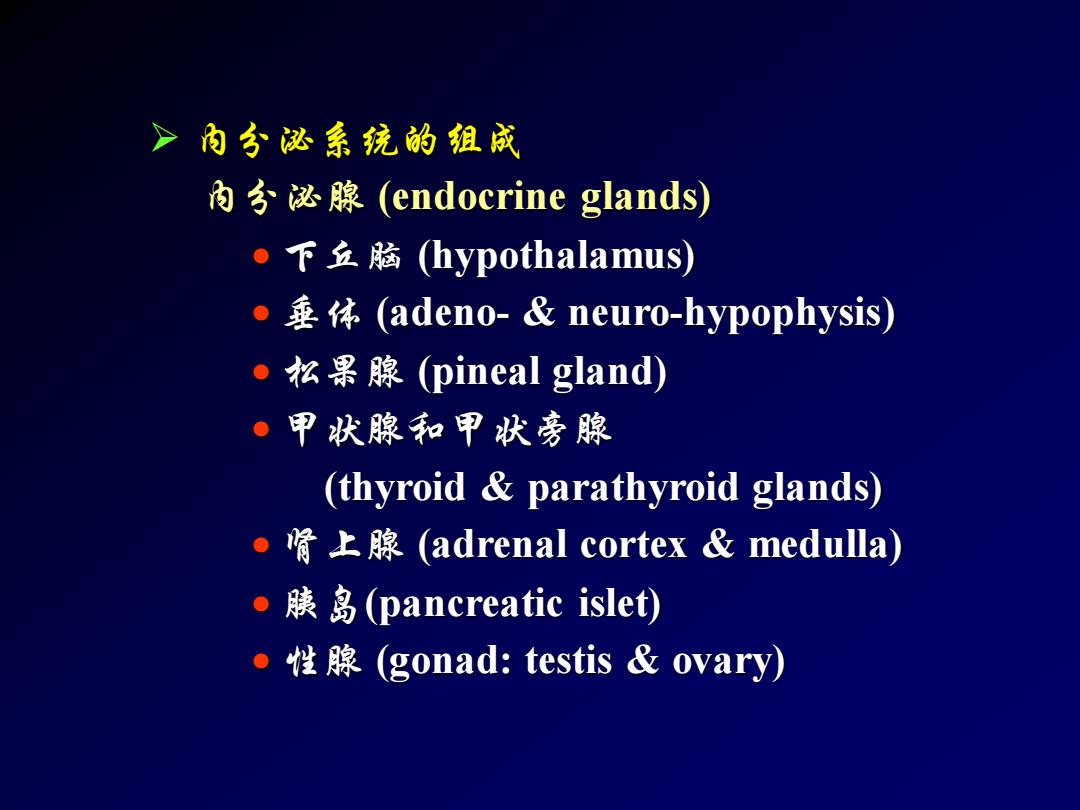
>内分泌系统的组成 肉分秘腺(endocrine glands) ◆下立脑(hypothalamus) ·垂体(adeno-&neuro-hypophysis) ·松果腺(pineal gland ·甲状腺和甲状旁腺 (thyroid parathyroid glands) ◆f上腺(adrenal cortex&medulla) ·胰岛(pancreatic islet) ●性腺(gonad:testis&ovary)
➢ 内分泌系统的组成 内分泌腺 (endocrine glands) • 下丘脑 (hypothalamus) • 垂体 (adeno- & neuro-hypophysis) • 松果腺 (pineal gland) • 甲状腺和甲状旁腺 (thyroid & parathyroid glands) • 肾上腺 (adrenal cortex & medulla) • 胰岛(pancreatic islet) • 性腺 (gonad: testis & ovary)
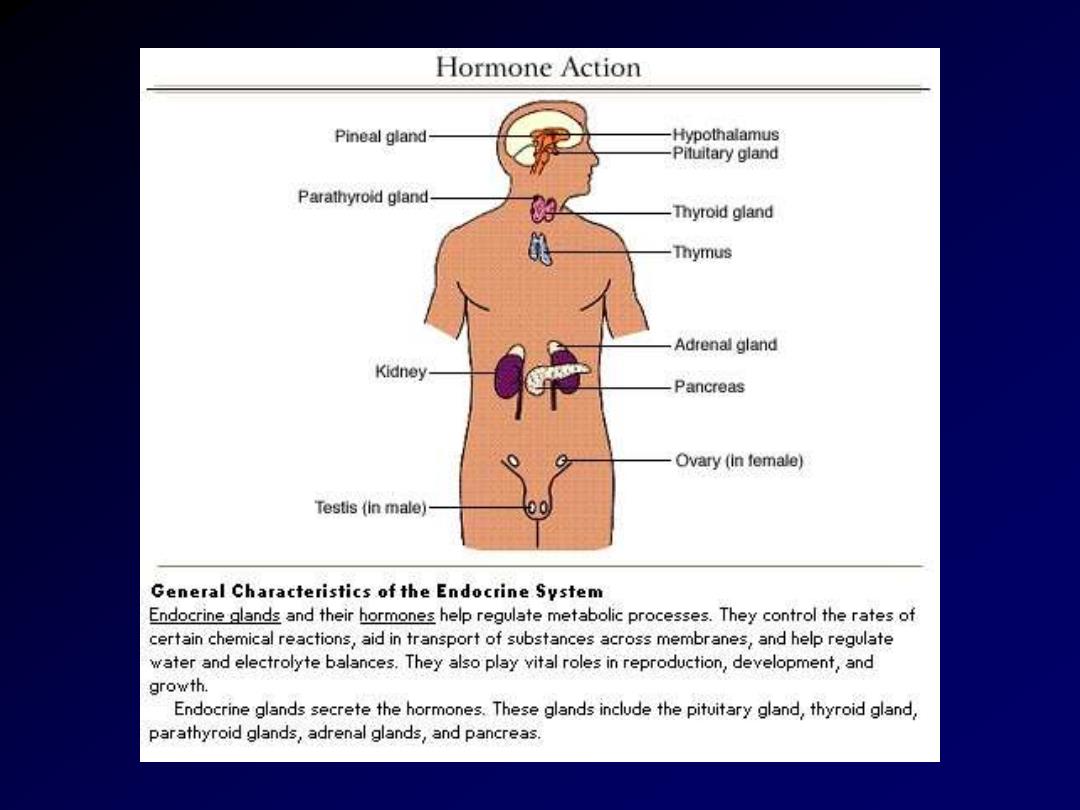
Hormone Action Pineal gland- Parathyroid gland -Thyroid gland -Thymus Adrenal gland Kidney -Pancreas Ovary(in female) Testis (in male) General Characteristics of the Endocrine System water and electrolyte balances.They also play vital roles in reproduction,development,and growth. Endocrine glands secrete the hormones.These glands include the pituitary gland,thyroid gland, parathyroid glands,adrenal glands,and pancreas
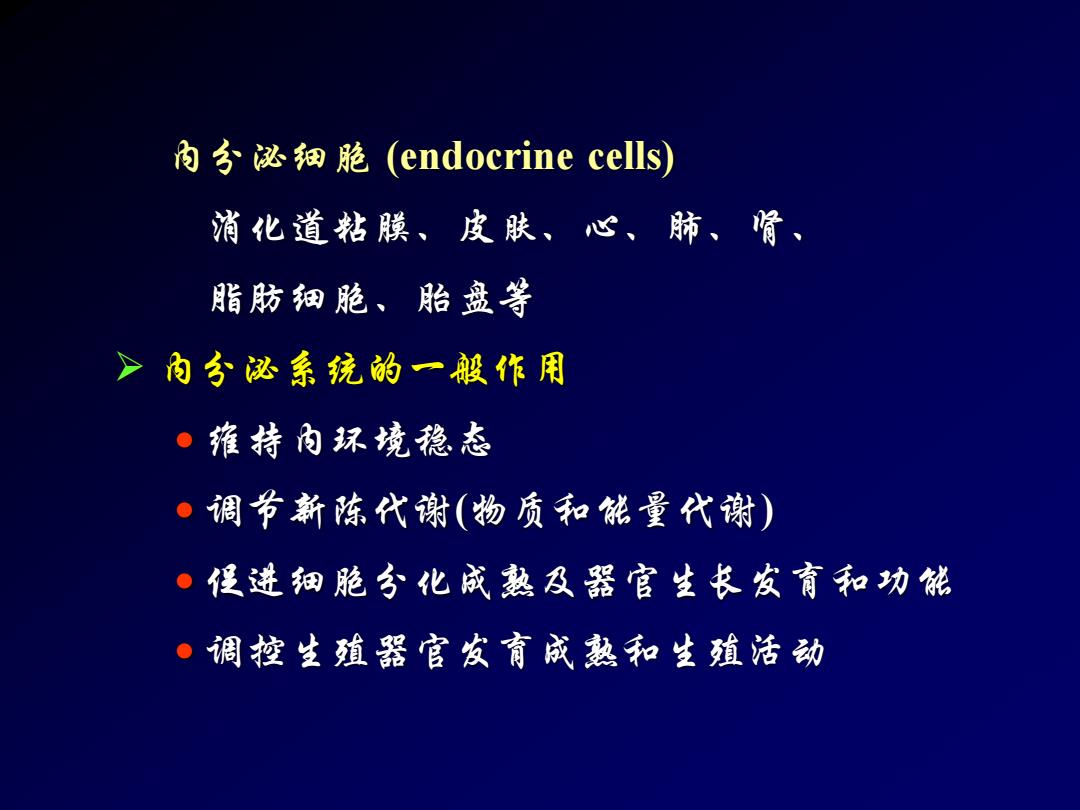
为分泌细胞(endocrine cells) 消化道粘膜、皮肤、心、肺、肾、 脂肪细胞、胎盘等 >内分泌系统的一般作用 ·推持肉环境稳态 ·调节新陈代谢(物质和能量代谢) ·任进细胞分化成熟及器官生长发育和功能 ·调控生殖器官发育成熟和生殖活动
内分泌细胞 (endocrine cells) 消化道粘膜、皮肤、心、肺、肾、 脂肪细胞、胎盘等 ➢ 内分泌系统的一般作用 • 维持内环境稳态 • 调节新陈代谢(物质和能量代谢) • 促进细胞分化成熟及器官生长发育和功能 • 调控生殖器官发育成熟和生殖活动
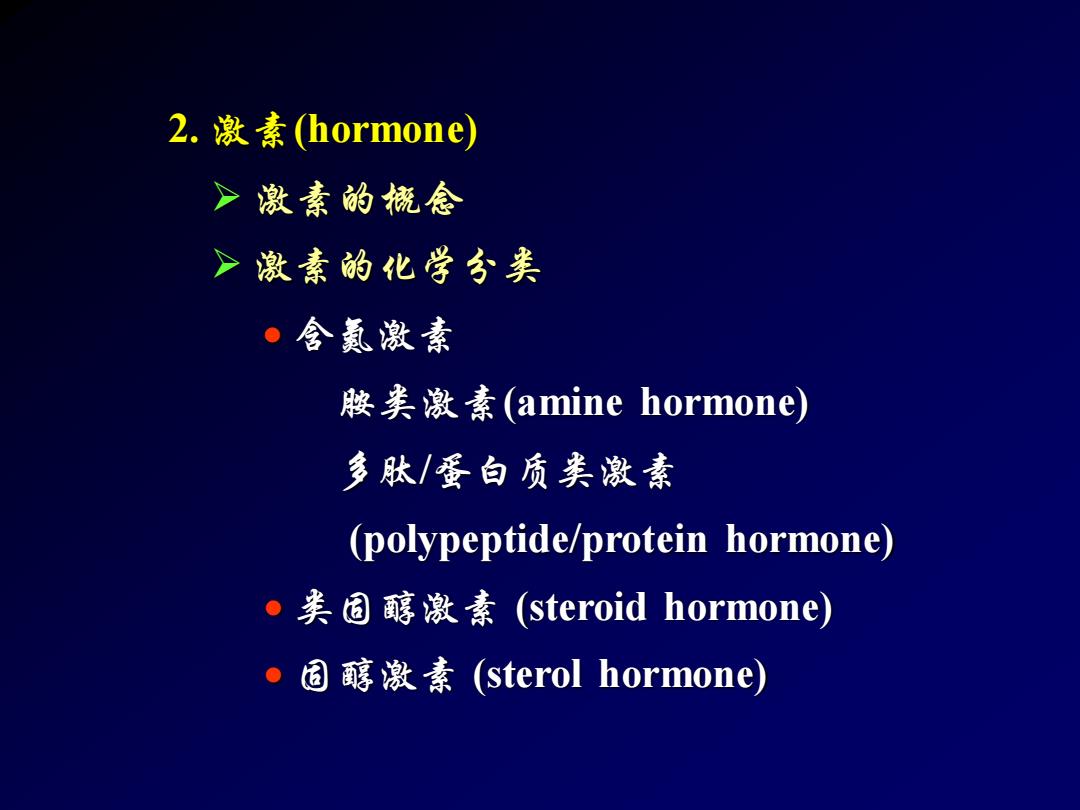
2.激素(hormone) >激素的瓶念 >激素的化学分美 ·含氨激素 胺美激素(amine hormone) 多肽/蛋白质类激素 (polypeptide/protein hormone) ·类园醇激素(steroid hormone) ·园醇激素(sterol hormone)
2. 激素(hormone) ➢ 激素的概念 ➢ 激素的化学分类 • 含氮激素 胺类激素(amine hormone) 多肽/蛋白质类激素 (polypeptide/protein hormone) • 类固醇激素 (steroid hormone) • 固醇激素 (sterol hormone)
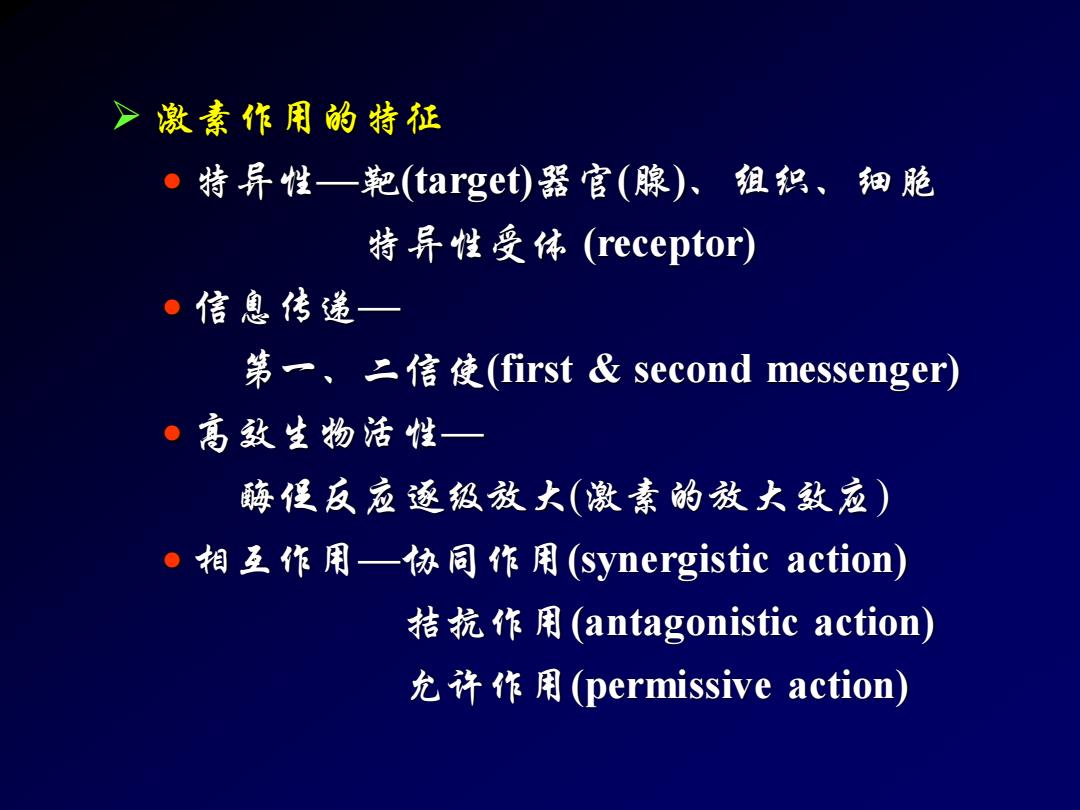
>激素作用的特征 ·特异性一靶(target)器官(腺)、组积、细胞 特异性受体(receptor) ·信息传递 第一、二信使(first&second messenger) ·高致生物活性一 酶促反应逐级放大(激素的放大致应) ·相互作用一协同作用(synergistic action) 拮抗作用(antagonistic action) 允许作用(permissive action)
➢ 激素作用的特征 • 特异性—靶(target)器官(腺)、组织、细胞 特异性受体 (receptor) • 信息传递— 第一、二信使(first & second messenger) • 高效生物活性— 酶促反应逐级放大(激素的放大效应) • 相互作用—协同作用(synergistic action) 拮抗作用(antagonistic action) 允许作用(permissive action)

>激素信息的传递方式 ·肉分泌(endocrine)或远距分泌(telecrine) 经典的肉分泌,甲状腺激素 。旁分泌(paracrine) 胃肠激素 ●自分泌(autocrine) 前列腺素 ·神经分泌(neurocrine) 神经肽
➢ 激素信息的传递方式 • 内分泌(endocrine)或远距分泌(telecrine) 经典的内分泌, 甲状腺激素 • 旁分泌(paracrine) 胃肠激素 • 自分泌(autocrine) 前列腺素 • 神经分泌(neurocrine) 神经肽
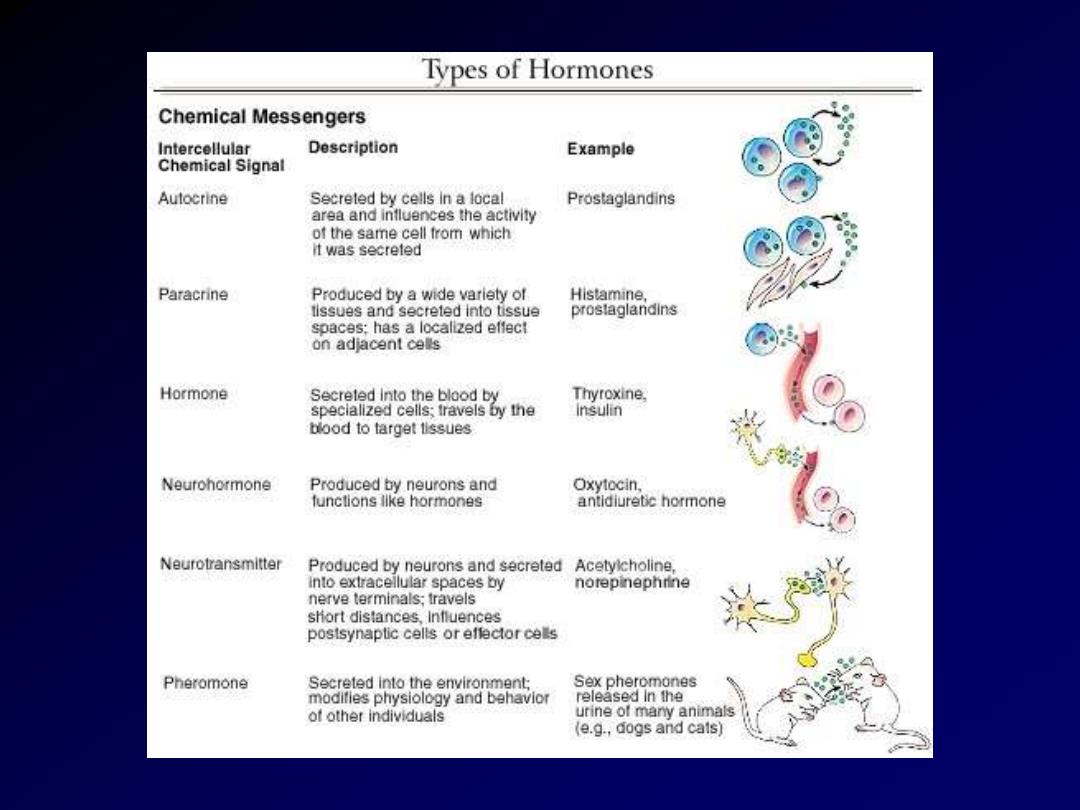
Types of Hormones Chemical Messengers Chemial Description Example Autocrine nactvty Prostaglandins Paracrine saol品dns Hormone vey the Neurohormone nelonomo rt hormone Neurotransmitter g08gyspCe8s0ree8iorces Pheromone eaegn888ypaheeaaier 989m9a8s of other individuals (e.g.,dogs and cats)
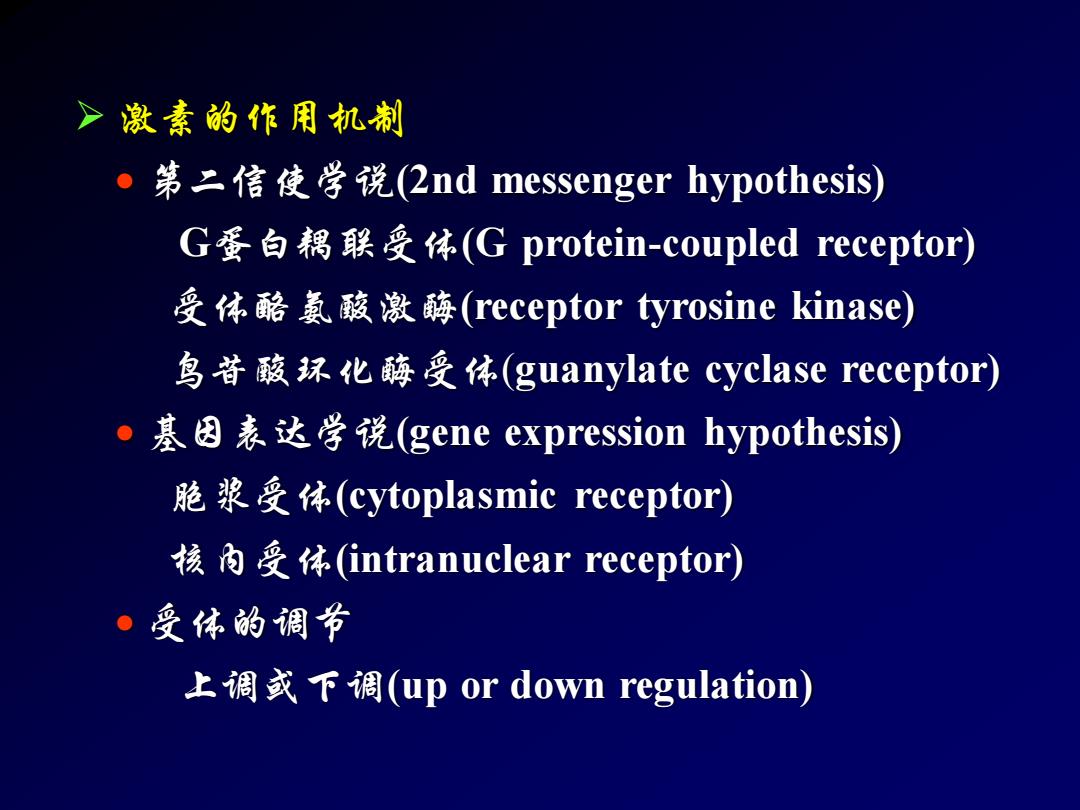
>激素的作用机制 ·第二信使学说(2 nd messenger hypothesis) G蛋白耦联受体(G protein-coupled receptor) 受体酪氨酸激酶(receptor tyrosine kinase) 鸟苷酸环化酶受体(guanylate cyclase receptor) ·基因表达学说(gene expression hypothesis) 形浆受体(cytoplasmic receptor) 核肉受体(intranuclear receptor) ·受体的调节 上调或下调(up or down regulation)
➢ 激素的作用机制 • 第二信使学说(2nd messenger hypothesis) G蛋白耦联受体(G protein-coupled receptor) 受体酪氨酸激酶(receptor tyrosine kinase) 鸟苷酸环化酶受体(guanylate cyclase receptor) • 基因表达学说(gene expression hypothesis) 胞浆受体(cytoplasmic receptor) 核内受体(intranuclear receptor) • 受体的调节 上调或下调(up or down regulation)